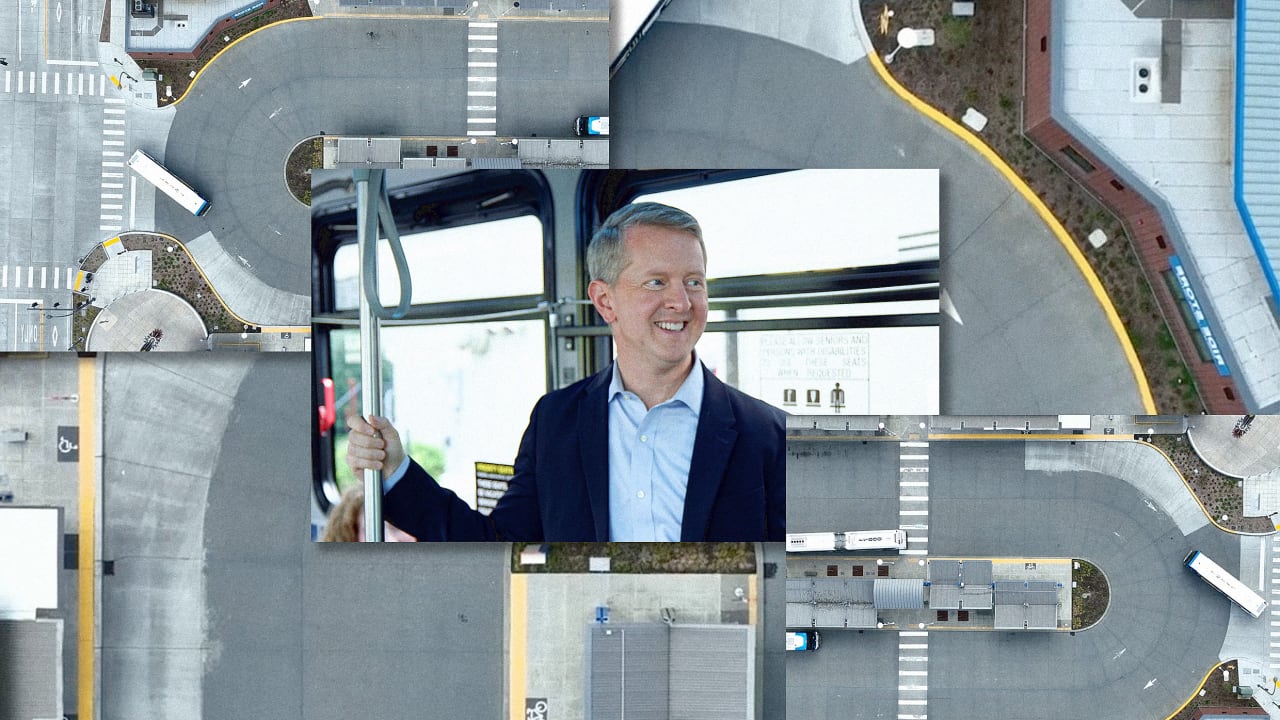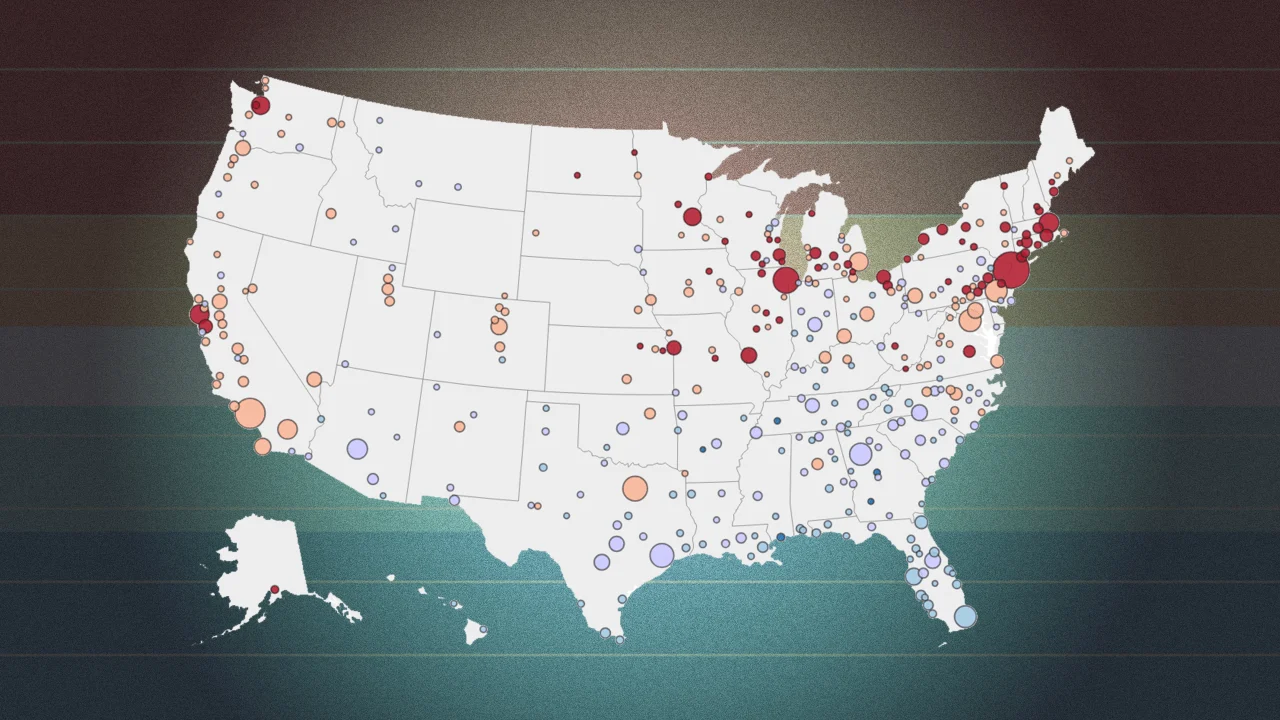‘Jeopardy!’ star Ken Jennings is hosting a miniseries about the history of public transit
In September 2024, Jeopardy! host Ken Jennings took a brief interlude from taping one of America’s most iconic game shows to film another series: a YouTube show about the history of public transit, set in his local county of Snohomish, Washington. The show, called The Transit Effect, is a seven-part series that examines why public transit matters, diving into everything from infrastructure and economic growth to access to work, school, and healthcare. It’s the brainchild of Community Transit, a public transportation agency in Washington’s Snohomish County, just north of Seattle. The show’s first episode is now available on YouTube and on Community Transit’s website, with the remaining installments slated to drop over the coming months and into 2026. Starting with the electric streetcars of the 1920s, The Transit Effect maps how American communities have been shaped by public transit—and, amid today’s notoriously car-centric American infrastructure, it presents a thesis for investing in more sustainable transportation options. The show is especially timely, given the Trump administration’s current crackdown on renewable energy and support for various fossil fuel industry projects. “We hope viewers come away with a deeper appreciation for how much public transit shapes daily life—even if they never set foot on a bus,” says Community Transit public information officer Monica Spain. “If this series sparks someone to think, ‘I had no idea transit did all that,’ or nudges them to take a ride instead of drive, that’s a win.” How Snohomish County’s ‘Community Transit’ snagged Ken Jennings Rory Graves is a senior marketing copywriter at Community Transit who helped develop and write The Transit Effect. She says that, when the idea for the show first came about, the team knew the series would need to be anchored by a host who was both familiar and trustworthy to a wide range of audiences. It wasn’t a new challenge for the agency: In 2024, Community Transit partnered with American travel writer Rick Steves—who has lived in Edmonds, Washington (a city inside Snohomish County) since 1967—on another educational transit series. For The Transit Effect, Graves thought Jennings, another longtime Edmonds resident, could be the perfect fit. “We wanted to find someone who was a trusted source of information to do that storytelling. Who better than Ken Jennings?” Graves says. In 2004, Jennings won 74 consecutive games of Jeopardy!, the longest winning streak in the show’s history, before becoming its host in 2021. Beyond his impressive credentials, Jennings also has a personal connection to Community Transit: As a college student, Jennings frequently rode the agency’s buses between his family’s home in Edmonds and the University of Washington. Today, he lives in Seattle. After Community Transit reached out to him over email, Jennings readily agreed to host The Transit Effect. But there was a small catch. Given Jennings’ tight schedule, the entire seven-part series had to be filmed in just four hours—a feat that required extensive preparation and multiple dry runs to “test every piece of equipment, walk through the setup, and build in redundancies,” Graves says. “We don’t have a huge budget like Amazon or Coca-Cola for our campaigns, but Ken was happy to collaborate with us, and we’re thankful for that.” [Image: courtesy Community Transit] Exploring how public transit shaped America as we know it To give viewers a peek behind the curtain at the history of public transit, The Transit Effect is organized into sub-10-minute episodes by themes. Episode 1, for example, details how ’20s era streetcars, electric trolleys, and subway systems determined how major American cities expanded; episode 3 dives into the environmental impact of public transit compared to travel by car; and episode 6 explains how public transit can serve as a vital lever of accessibility for kids, the elderly, those with disabilities, and those without access to a vehicle. Throughout the series, Jennings refers to local examples to help illustrate this history—like in episode 1, which notes how the expansion of the Link light rail, a train system in the Seattle area that opened in 2009, has roots that extend back by more than 100 years. “Everyone’s talking about Link light rail expansion, but did you know our region had electric mass transit more than a century ago?” Graves says. “The old Interurban Trolley once ran along the same route we now know as the Interurban Trail. We often treat electric transit like it’s brand new, but it’s actually part of our history. What’s fascinating is how long cleaner, electric options have existed—and how car-centric planning pushed them aside.” Another surprising tidbit explored in the show is how public transit shaped the musical world. The series highlights how New York City’s subway system helped make Harlem a cultural epicenter for Black Americans in the ’20s and ’30s, a

In September 2024, Jeopardy! host Ken Jennings took a brief interlude from taping one of America’s most iconic game shows to film another series: a YouTube show about the history of public transit, set in his local county of Snohomish, Washington.
The show, called The Transit Effect, is a seven-part series that examines why public transit matters, diving into everything from infrastructure and economic growth to access to work, school, and healthcare. It’s the brainchild of Community Transit, a public transportation agency in Washington’s Snohomish County, just north of Seattle. The show’s first episode is now available on YouTube and on Community Transit’s website, with the remaining installments slated to drop over the coming months and into 2026.
Starting with the electric streetcars of the 1920s, The Transit Effect maps how American communities have been shaped by public transit—and, amid today’s notoriously car-centric American infrastructure, it presents a thesis for investing in more sustainable transportation options. The show is especially timely, given the Trump administration’s current crackdown on renewable energy and support for various fossil fuel industry projects.
“We hope viewers come away with a deeper appreciation for how much public transit shapes daily life—even if they never set foot on a bus,” says Community Transit public information officer Monica Spain. “If this series sparks someone to think, ‘I had no idea transit did all that,’ or nudges them to take a ride instead of drive, that’s a win.”
How Snohomish County’s ‘Community Transit’ snagged Ken Jennings
Rory Graves is a senior marketing copywriter at Community Transit who helped develop and write The Transit Effect. She says that, when the idea for the show first came about, the team knew the series would need to be anchored by a host who was both familiar and trustworthy to a wide range of audiences.
It wasn’t a new challenge for the agency: In 2024, Community Transit partnered with American travel writer Rick Steves—who has lived in Edmonds, Washington (a city inside Snohomish County) since 1967—on another educational transit series. For The Transit Effect, Graves thought Jennings, another longtime Edmonds resident, could be the perfect fit.
“We wanted to find someone who was a trusted source of information to do that storytelling. Who better than Ken Jennings?” Graves says. In 2004, Jennings won 74 consecutive games of Jeopardy!, the longest winning streak in the show’s history, before becoming its host in 2021.
Beyond his impressive credentials, Jennings also has a personal connection to Community Transit: As a college student, Jennings frequently rode the agency’s buses between his family’s home in Edmonds and the University of Washington. Today, he lives in Seattle. After Community Transit reached out to him over email, Jennings readily agreed to host The Transit Effect.
But there was a small catch. Given Jennings’ tight schedule, the entire seven-part series had to be filmed in just four hours—a feat that required extensive preparation and multiple dry runs to “test every piece of equipment, walk through the setup, and build in redundancies,” Graves says. “We don’t have a huge budget like Amazon or Coca-Cola for our campaigns, but Ken was happy to collaborate with us, and we’re thankful for that.”

Exploring how public transit shaped America as we know it
To give viewers a peek behind the curtain at the history of public transit, The Transit Effect is organized into sub-10-minute episodes by themes. Episode 1, for example, details how ’20s era streetcars, electric trolleys, and subway systems determined how major American cities expanded; episode 3 dives into the environmental impact of public transit compared to travel by car; and episode 6 explains how public transit can serve as a vital lever of accessibility for kids, the elderly, those with disabilities, and those without access to a vehicle.
Throughout the series, Jennings refers to local examples to help illustrate this history—like in episode 1, which notes how the expansion of the Link light rail, a train system in the Seattle area that opened in 2009, has roots that extend back by more than 100 years.
“Everyone’s talking about Link light rail expansion, but did you know our region had electric mass transit more than a century ago?” Graves says. “The old Interurban Trolley once ran along the same route we now know as the Interurban Trail. We often treat electric transit like it’s brand new, but it’s actually part of our history. What’s fascinating is how long cleaner, electric options have existed—and how car-centric planning pushed them aside.”
Another surprising tidbit explored in the show is how public transit shaped the musical world. The series highlights how New York City’s subway system helped make Harlem a cultural epicenter for Black Americans in the ’20s and ’30s, attracting the musicians that would ultimately bring the Harlem Renaissance to life.
“It’s wild to think that something as everyday as a transit system could set off a domino effect that helped launch the careers of artists whose legacies have helped define modern music,” Graves says.
Through these stories, Spain says, Community Transit hopes to help viewers understand how “public transportation shapes communities and removes barriers to opportunity,” and to encourage community members to invest in their local public transit systems.
“More than anything, we want people to see transit not just as a service, but as a powerful force for good in our region,” Spain says.






























































































































































